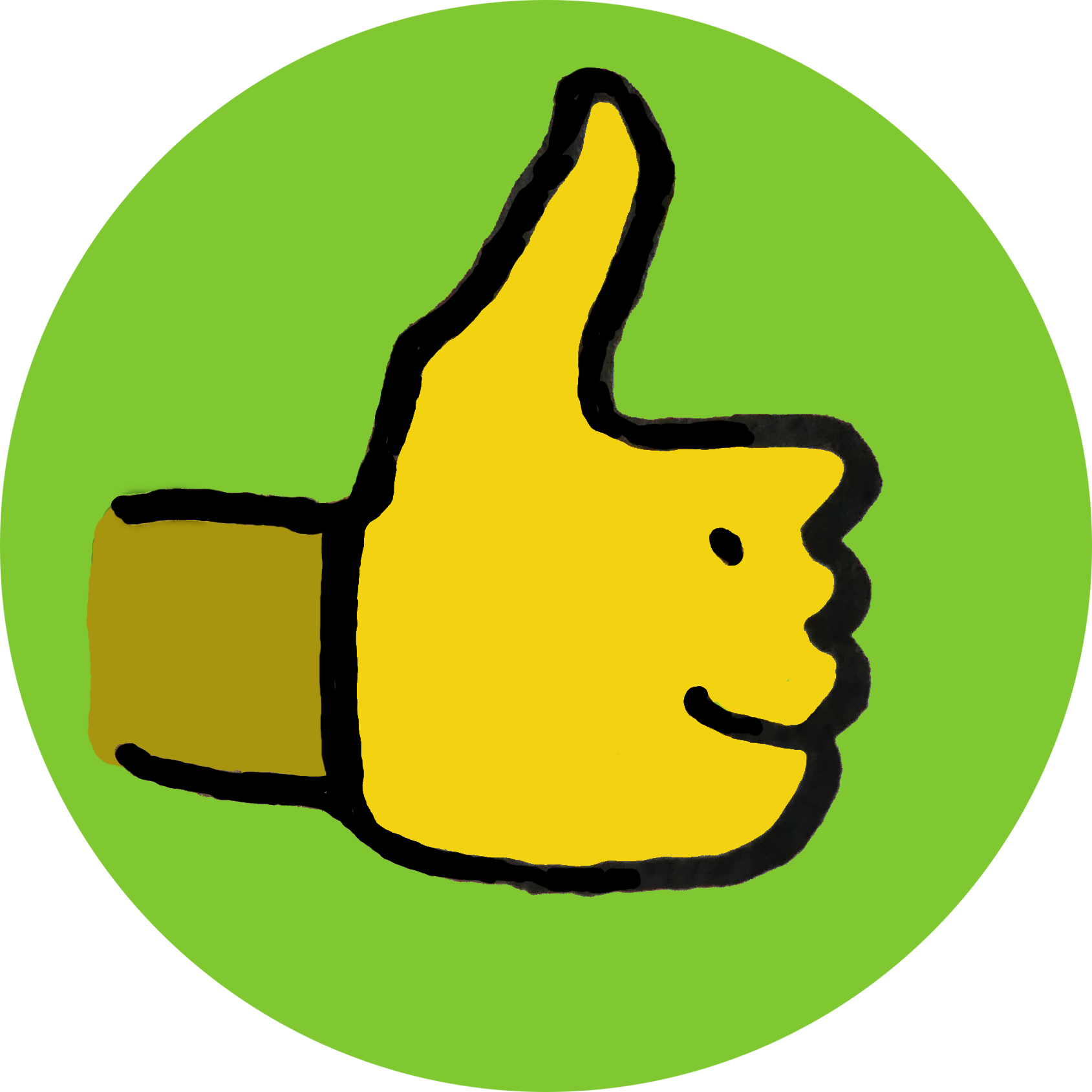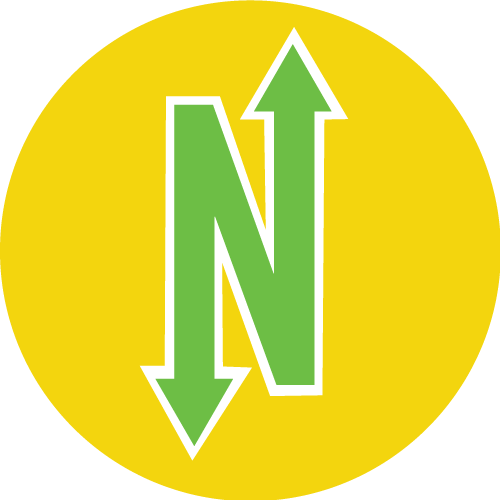15 April 2024
Cartoon History
Tools for Possibilities: issue no. 82
Once a week we’ll send out a page from Cool Tools: A Catalog of Possibilities. The tools might be outdated or obsolete, and the links to them may or may not work. We present these vintage recommendations as is because the possibilities they inspire are new. Sign up here to get Tools for Possibilities a week early in your inbox.
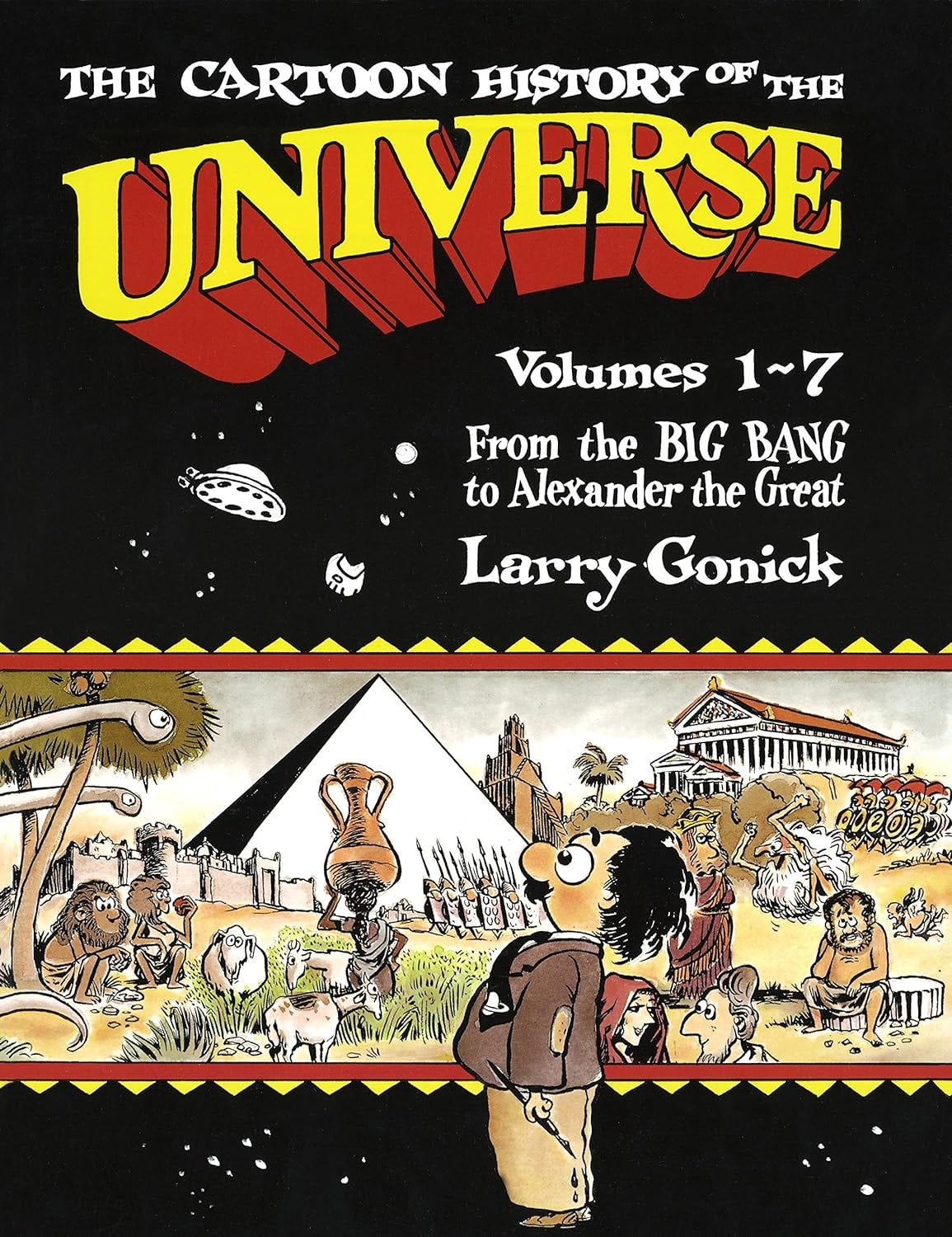
Flippant, but painless, world history
Cartoon History of the Universe (Volumes 1, 2, 3)
Larry Gonick, the over-educated cartoonist, continues his series of book-length comic-strips that illustrate ancient history. This new 300-page installment covers the rise of Arabia and the role of “Orientals” in crafting the culture we have today. In Gonick’s hands history is a hoot, and very much about ideas. I particularly savor this latest volume because by moving the center of the universe somewhere east of Europe — delving into Islam, Africa and East Asia — Gonick’s cartoons can remedy the ignorance and arrogance of the west. Laugh your way to enlightenment! — KK
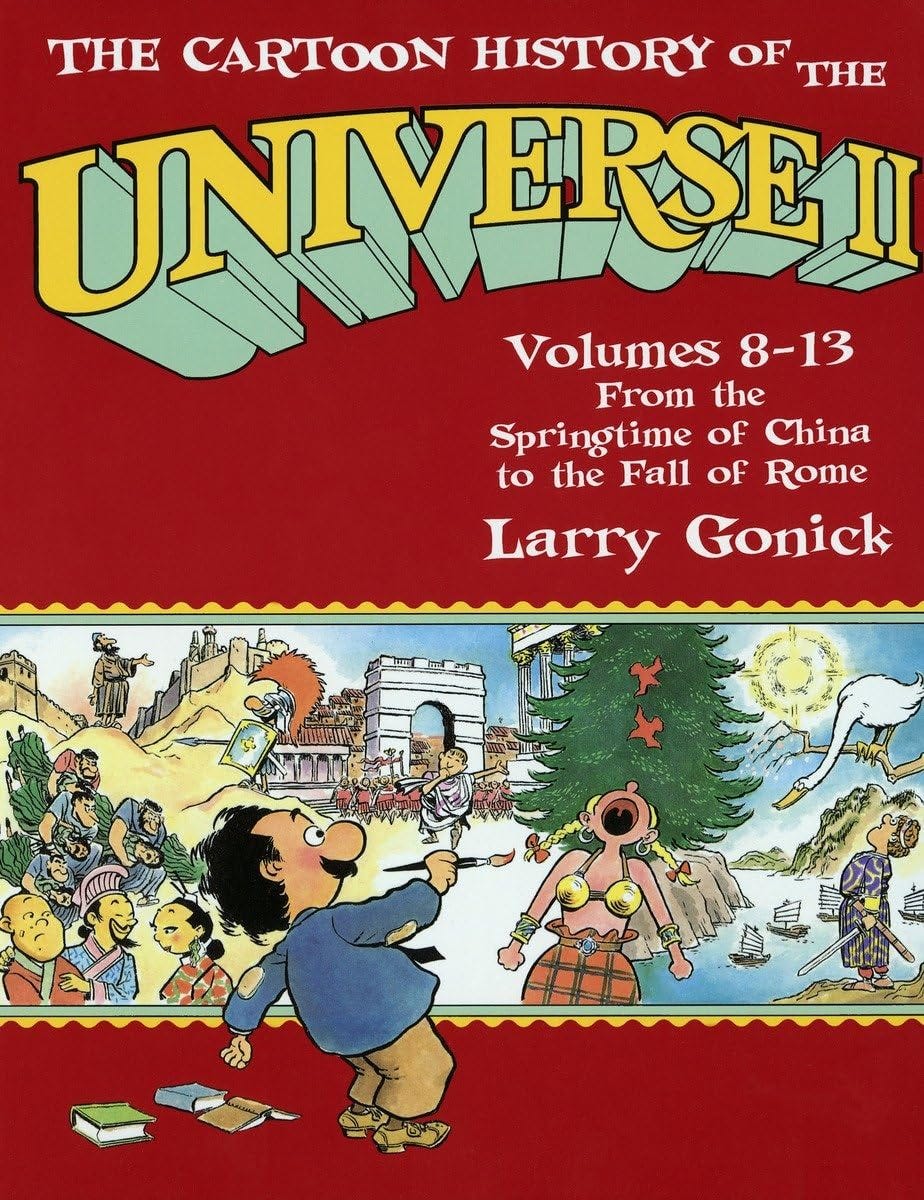

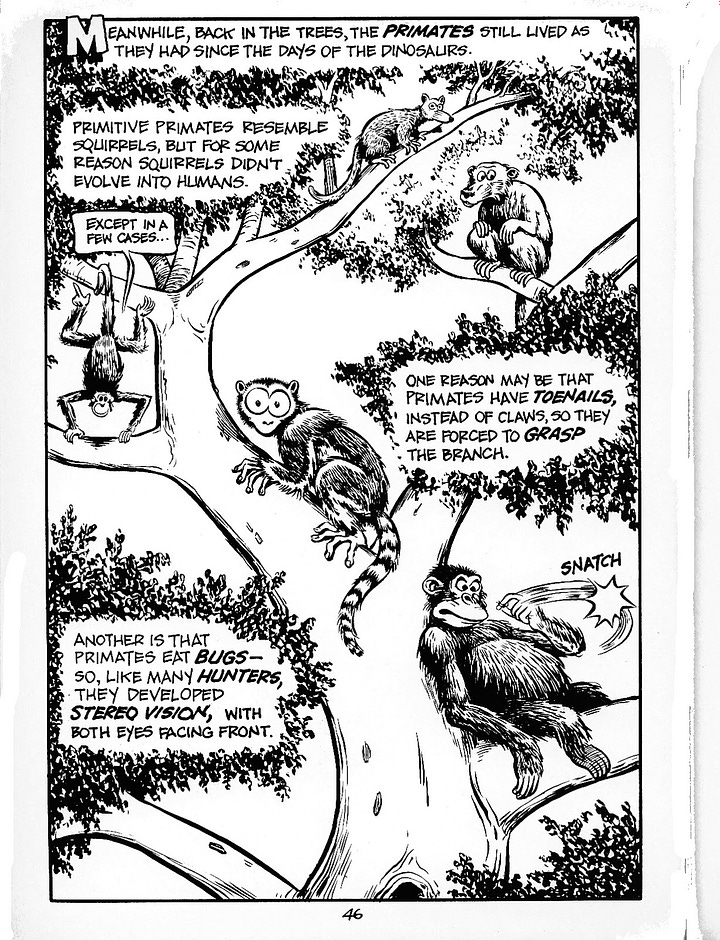
14 April 2024
Gardzen pads/Time tactics/Does the Dog Die?
Recomendo - issue #405
Sign up here to get Recomendo a week early in your inbox.
Kneeling pads
When I work in the garden, or fiddle with bike tires, or work on something that requires I kneel, I grab an inexpensive foam kneeling pad, like this one, from a pack of Gardzen (3 for $16). No knee discomfort. A small thing that makes a big difference. — KK
15 Methods to Master Your Time
This graphic illustrates 15 popular time management tactics. The methods I use the are the Pomodoro Technique, which involves working in 25-minute cycles with breaks in between, and Time Blocking/Task Batching. This is my first time hearing of the “Pickle Jar Method,” but it does seem like I could cross a lot of things of my list working this way: 1. Do major tasks first. 2. Slot in minor tasks around the major ones. 3. Continuously assess and reprioritize tasks. — CD
Movie trigger warnings
Do you find certain subjects too stressful to bear in a movie? If so, Does the Dog Die? is for you. Here, you can input a movie title and it provides a list of content warnings. For example, Marathon Man includes a warning for “damaged teeth,” which makes my skin crawl. You can also search in reverse — a search for “Are any teeth damaged?” results in a scarily long list of movies that depict teeth being broken. — MF
Chinese sci-fi series
The biggest cultural export from China this century is the science fiction novel The Three-Body Problem. A ten-part Chinese version of it was made a few years ago, which was okay, but Netflix has just remade 3 Body Problem into an 8-part series produced by the guys behind Game of Thrones megahit series. I’m enjoying this version even more than the book. The story has been globalized, ramped up, and supercharged with appropriate effects, to make it clear, compelling, great science fiction. — KK
The Library of Consciousness
The Library of Consciousness is a growing collection of writings, lectures and media about the human experience and all its mysteries. You don’t have to know what you’re looking for, just click around or search for keywords to navigate. It’s a source of inspiration. Right now, there are 200 authors in the library, and the curator says that they are actively seeking female and POC perspectives and welcomes recommendations. — CD
Cheap AI transcription
I need to transcribe a large number of recorded interviews every month.. I used to be a subscriber to Otter.ai, but it has a limit of 10 uploads per month. I have found a superior replacement, notta.ai, which is cheaper ($8.25 per month) and offers 1,800 minutes (30 hours) of transcription per month, which is more than enough for my needs. Notta’s free plan provides 120 minutes, which should be sufficient for most people. I’ve also noticed that Notta is faster and just as accurate as Otter. — MF
04/14/2411 April 2024
Airline Answers/Portable Blackout Curtains/Most Polluted Cities
Nomadico issue #99
A weekly newsletter with four quick bites, edited by Tim Leffel, author of A Better Life for Half the Price and The World’s Cheapest Destinations. See past editions here, where your like-minded friends can subscribe and join you.
Airline Filtering Site
With so many poor or unreliable results coming up in Google searches these days, it’s nice to find a website that answers your questions quickly and accurately. This one called Airlinelist.com is great at showing you filtered results like who is in which frequent flier alliance, the airlines that allow pets in the cabin, or which airlines have the best-paid pilots. “No Boeing” only gets you two results but the “No 737 Max” filter gives you around 100 airlines.
Portable Blackout Curtains
If you have trouble sleeping on the road because of light and don’t like to wear a mask all night, these Sleepout portable blackout curtains that Mark F. discovered could be a godsend. They use special suction cups to attach to varied surfaces and can mount vertically or horizontally.
Have Asthma? Avoid India
Where are the world’s most polluted cities? If you’ve spend much time in Asia, you probably have some good guesses. A staggering 99 out of the 100 worst in the world are on that continent according to this IQAir study and 83 are in India alone. You have to get into the 40s to get beyond these four countries: India, Pakistan, Bangladesh, and China. A few tidbits: Beloit, WI was the worst U.S. city for air quality and Vegas was the best, but “For the first time in the history of this report, Canada was the most polluted country in Northern America, with the region’s 13 most polluted cities located within its borders.”
Global Entry and NEXUS Fees Rising to $120
The fees for faster security line systems Global Entry, NEXUS, and SENTRI are going up to $120 as of October 1. It won’t matter if you have a credit card that reimburses this cost as part of their benefits though. Many of those have hefty annual fees, but you’ll come out ahead from the start if you have the IHG One card ($99 annually but a free night’s stay in upon renewal) or the United Explorer Card ($95 annually, but with a free checked bag each flight).
04/11/2410 April 2024
What’s in my NOW? — Rick Akin, DDS, MD
issue #174
Sign up here to get What’s in my NOW? a week early in your inbox.
My name is Rick Akin, DDS, MD, and I have been searching for all of life’s good things since childhood. At 52, I find myself returning more and more to the beauty and ideas I encountered during my under-appreciated liberal arts undergraduate education!
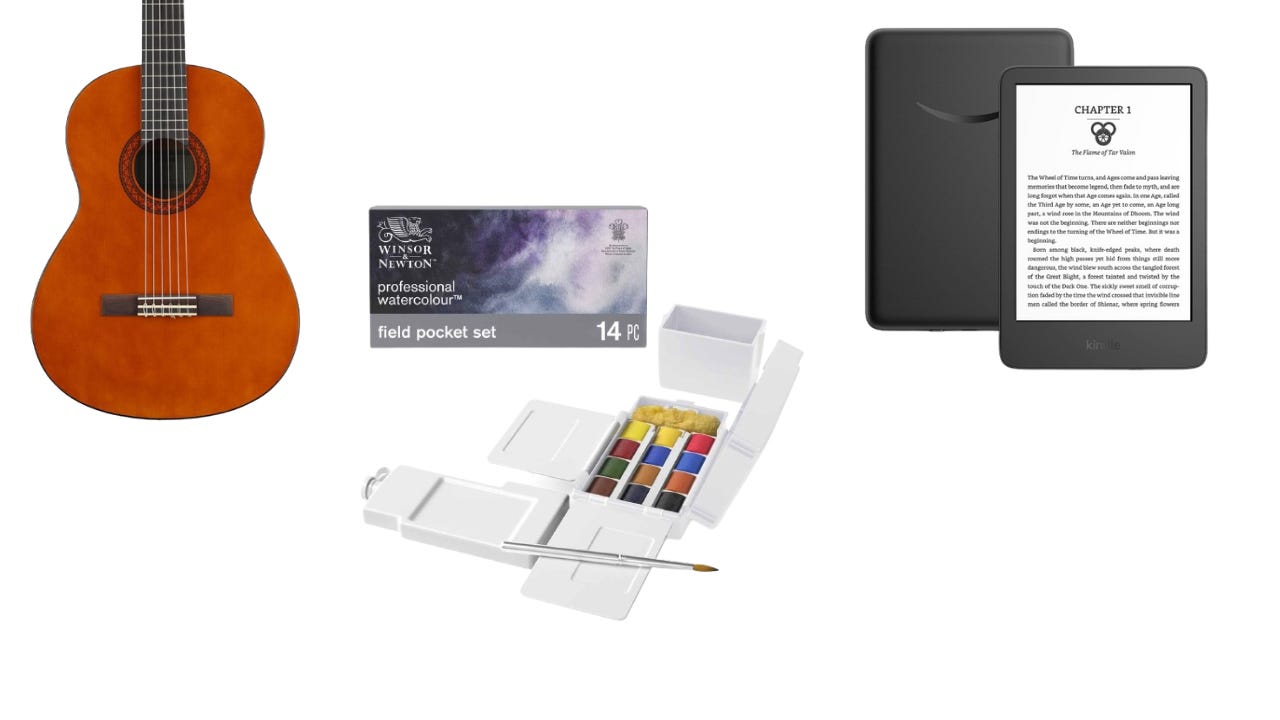
PHYSICAL
- Watercolor paint and a brush — I have a favorite brush, colors, papers, and techniques, and I practice every day. I keep all my paintings because it helps me face my perfectionist tendencies. Creating something, no matter how small, that never existed before has become meaningful to me at this point in my life.
- My classical guitar and music book — I tried YouTube, apps, and self-discipline, but the best investment I have made was a simple nylon string guitar and an instructor. He uses something called the Parkening method to teach classical guitar. I like Glen Hansard and Damien Rice, so it is certainly not my style of music, but I decided to learn his way. I now believe there is no replacing in-person interactions when learning an art form from a master. The eye-to-eye accountability, the great insights into how to play along with the value you show them by getting there on time, paying them for their expertise, and so many other intangibles of this experience have made these past 11 months an incredible journey.
- Kindle — It has taken me a long time not to be covetous when seeing someone with a big physical book on real paper. Although I think some books need to be tangible to me, like Mary Oliver or small books like Stop Sweating the Small Stuff, It’s All Small Stuff! by Richard Carlson, but when I do buy now, it is always used. I don’t know for sure if the 50 or more books I’ve read on my simple used Kindle is better for the environment, but it is good for my bookshelf, and now, with the audible version available right within the Kindle smartphone app, I cannot make excuses for not getting in at least a few pages in each day.
DIGITAL
- Richard Rohr on YouTube — A few years ago, I first came across a book called Falling Upward by a Franciscan priest and founder of the Center for Action and Contemplation. More than anything, his videos and books have helped me reassess (and heal) my relationship with God. The long and short of his message you may ask? To me his message is summed up with in two words, love and mercy.
- The Marginalian — I found Maria Popova’s website through a Tim Ferris podcast. She says her work is “primarily about the idea of timeless nourishment,” and her weekly emails break me out of the monotony that can sneak into my life by bringing me fresh ideas with deeper meaning, which I can then dive into easily and quickly because they are so well presented.
INVISIBLE
- “It changes.” — Buddha. I read this recently, and it has played out far more for the positive than the negative in my life.
What’s in your NOW?
We want to know what’s in your now — a list of 6 things that are significant to you now — 3 physical, 2 digital and 1 invisible.
If you’re interested in contributing an issue, use this form to submit: https://forms.gle/Pf9BMuombeg1gCid9
If we run your submission in our newsletter and blog, we’ll paypal you $25.
04/10/2409 April 2024
Raymond / Secret Codes & Number Games
Books That Belong On Paper Issue No. 9
Books That Belong On Paper first appeared on the web as Wink Books and was edited by Carla Sinclair. Sign up here to get the issues a week early in your inbox.
RAYMOND IS A TRULY FUNNY, BRIGHT, SWEET READ-ALOUD FOR BOTH KIDS AND GROWN-UPS
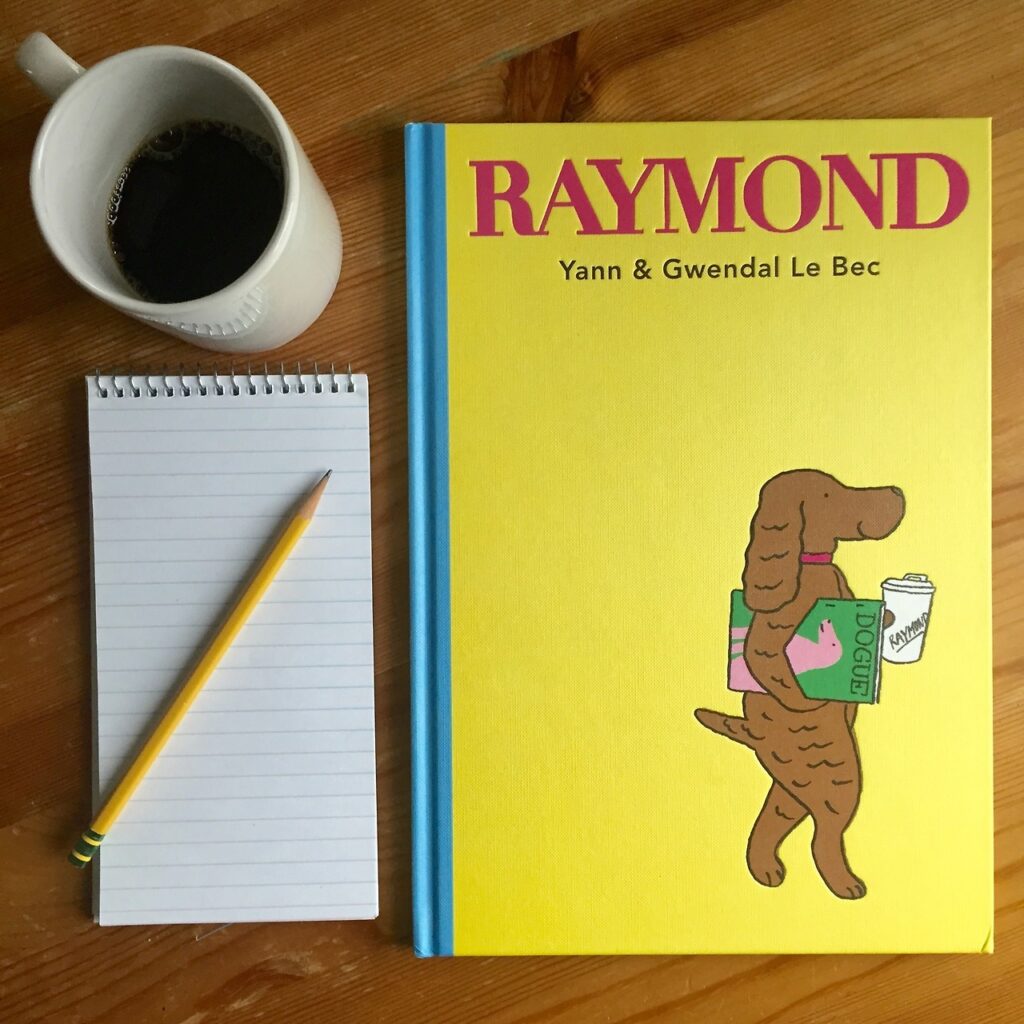
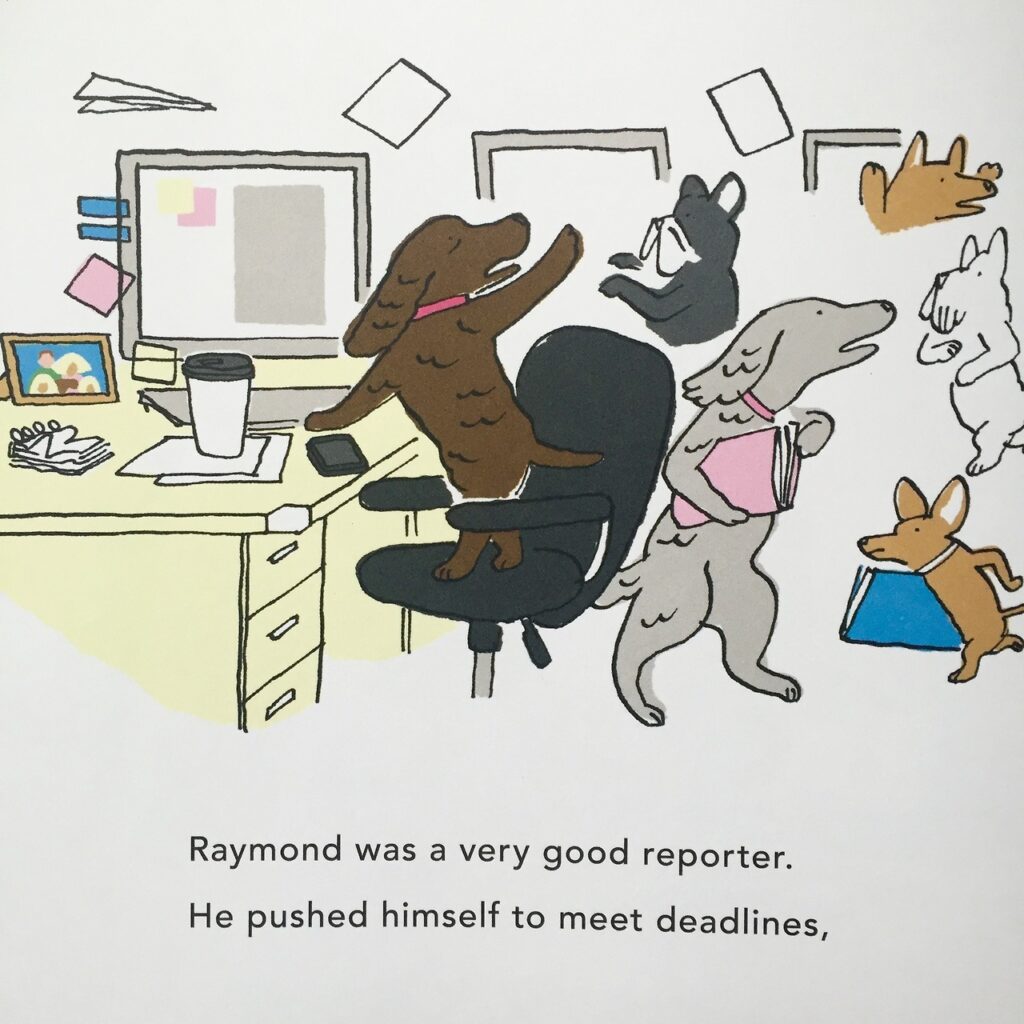
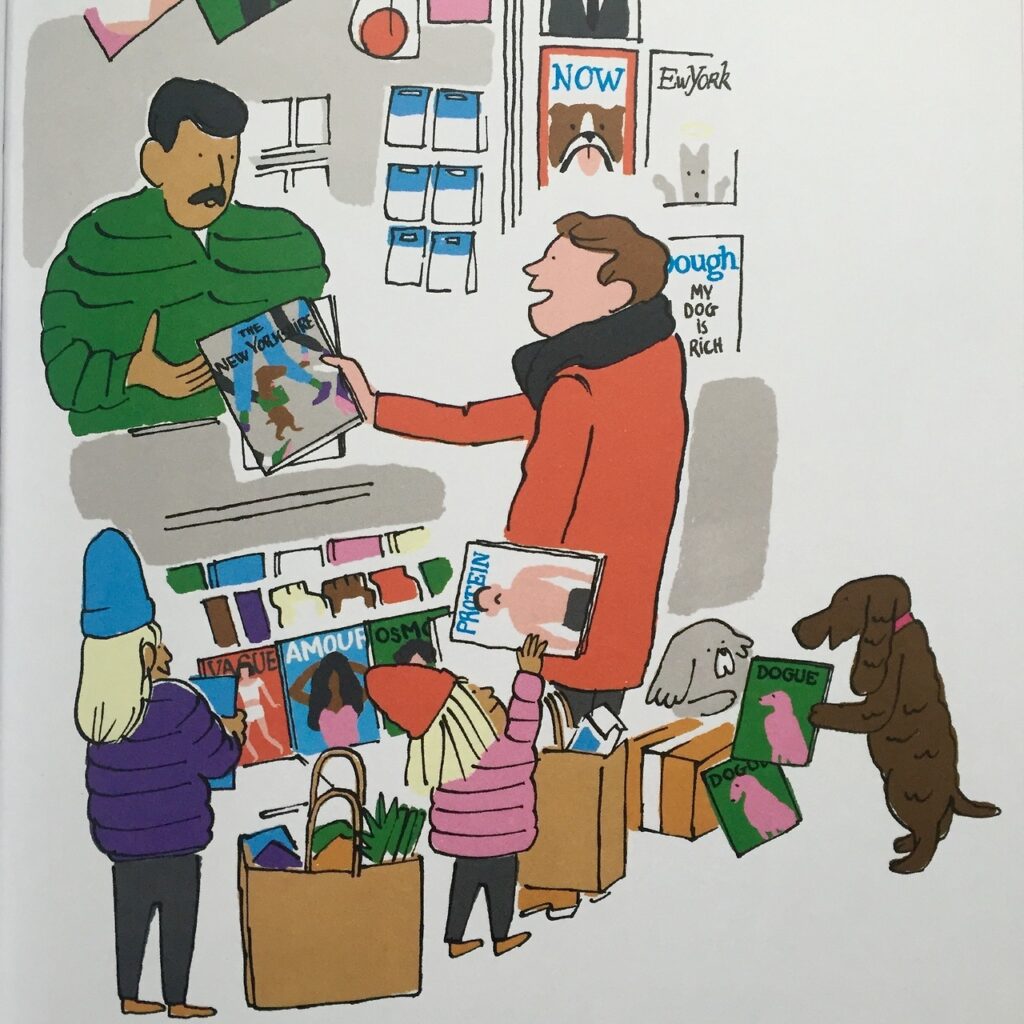
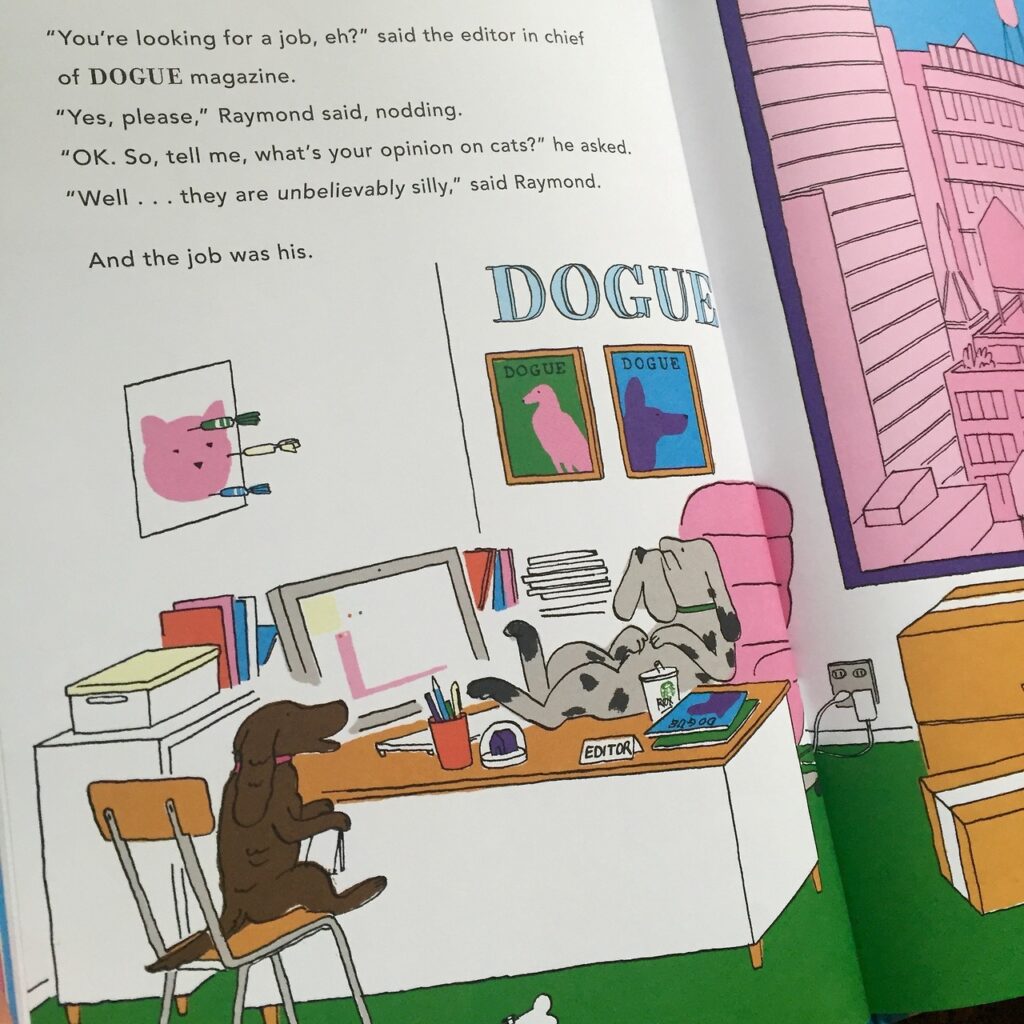
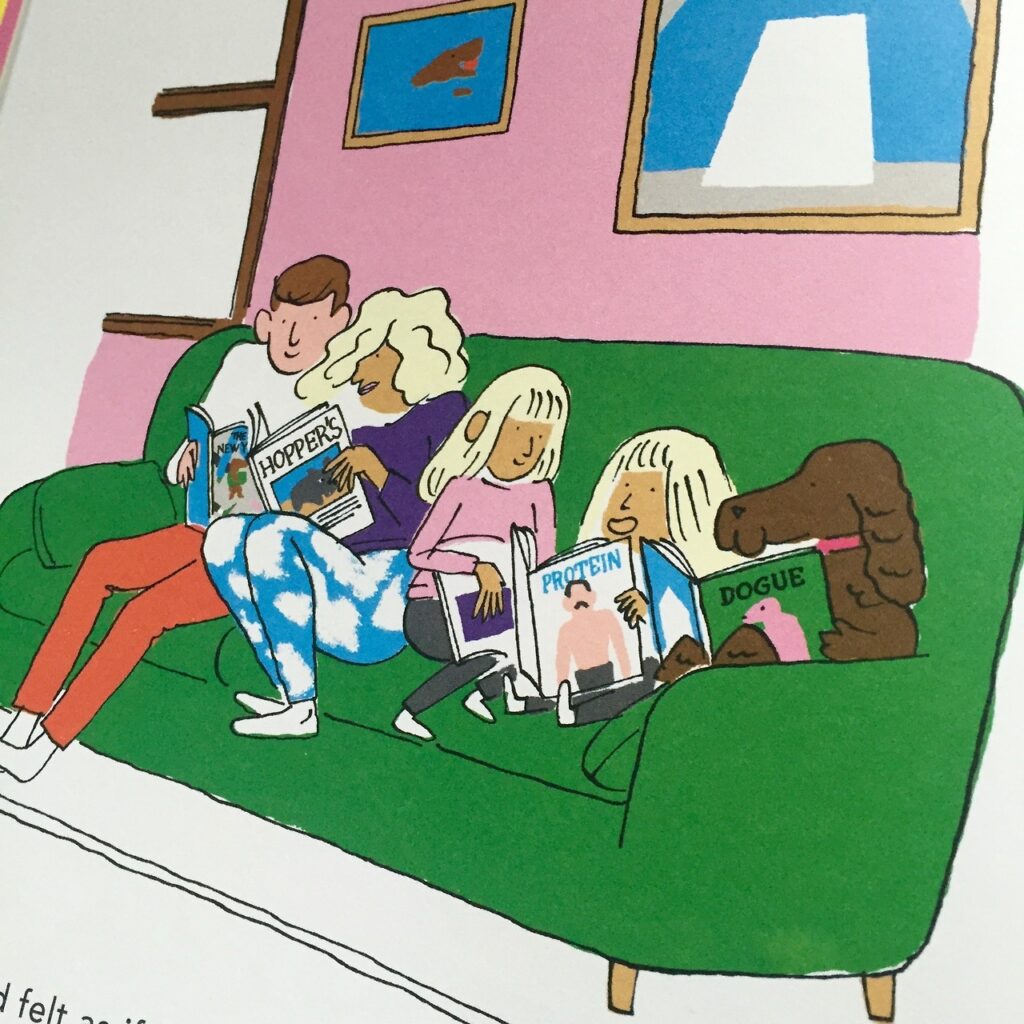
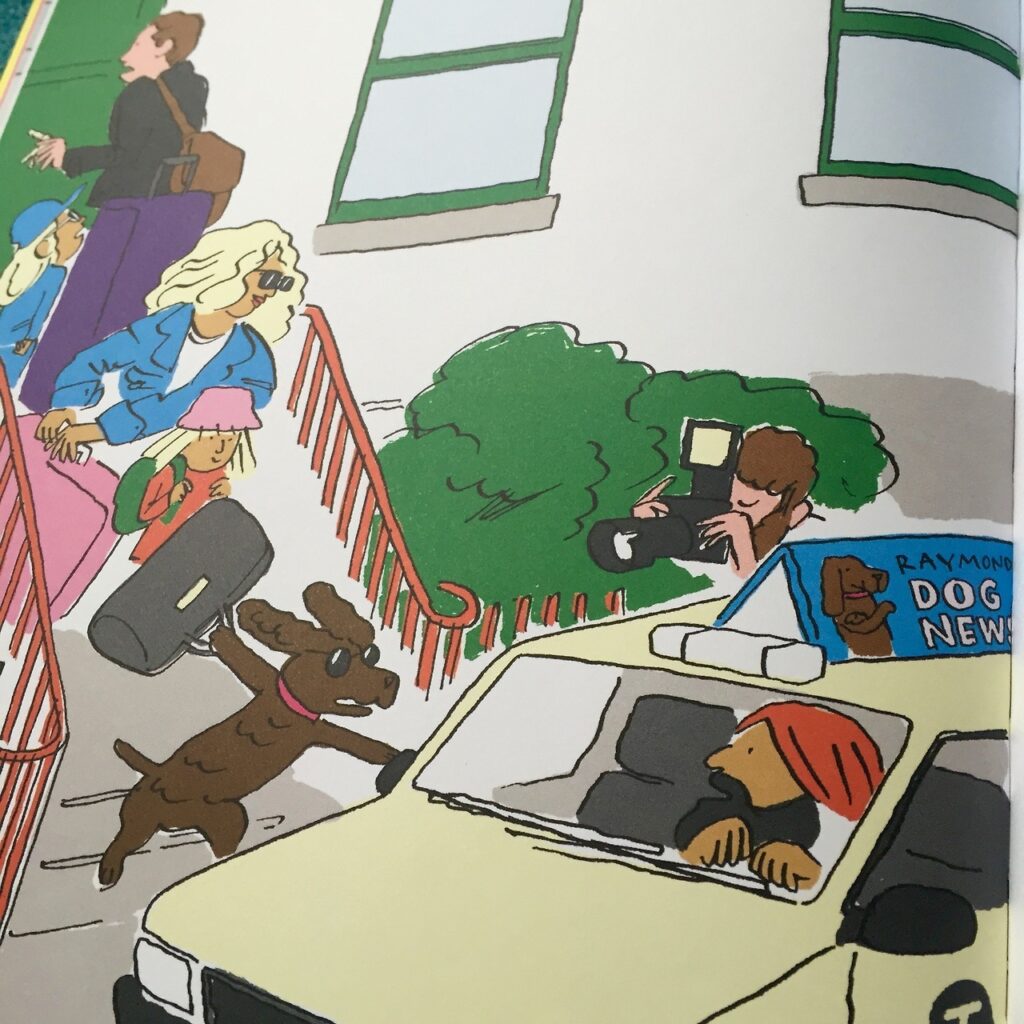
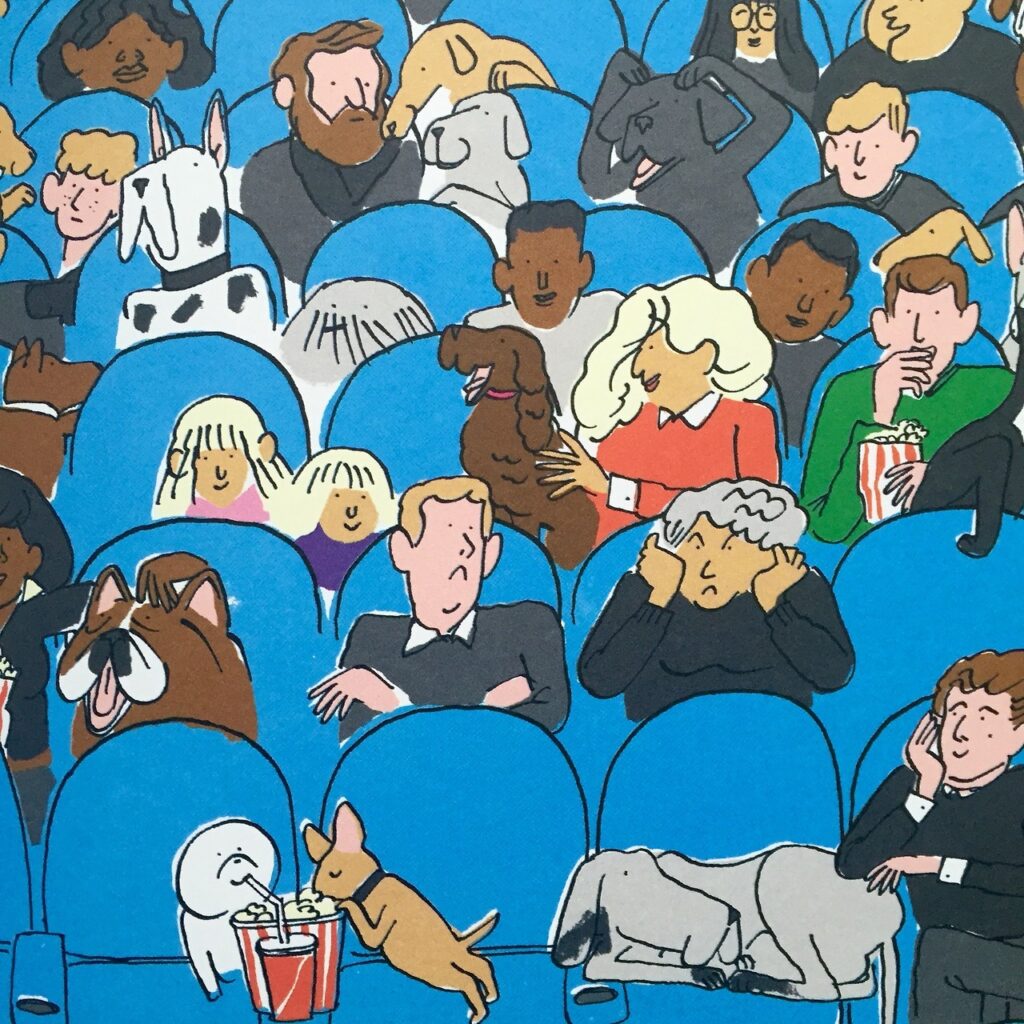
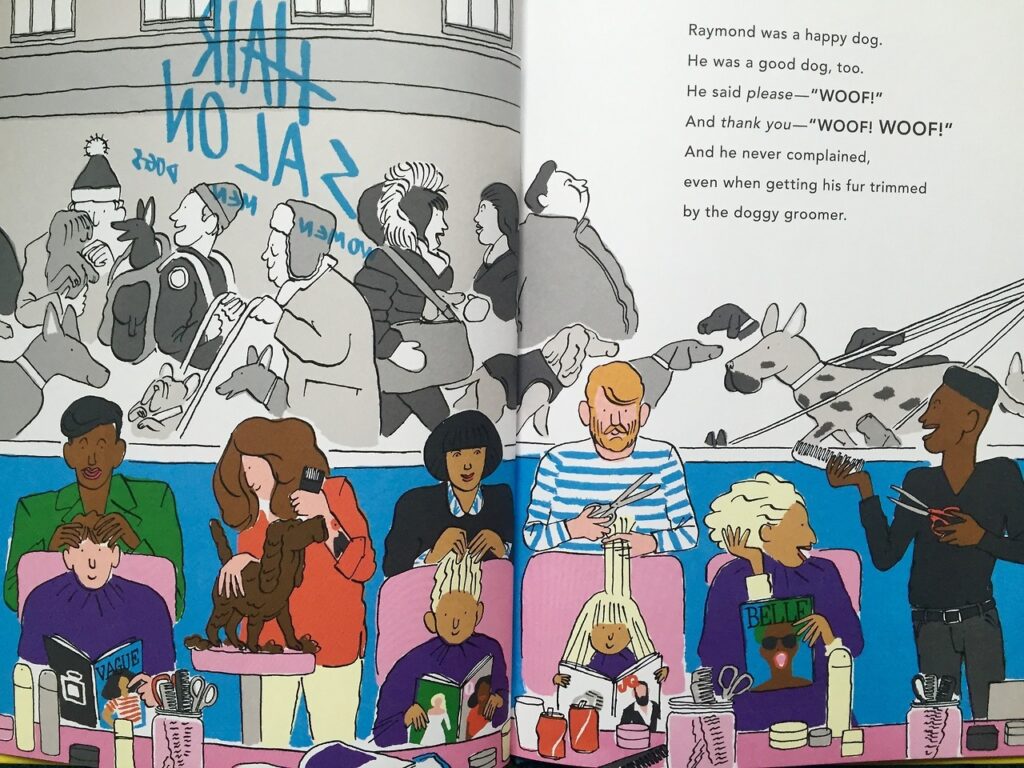
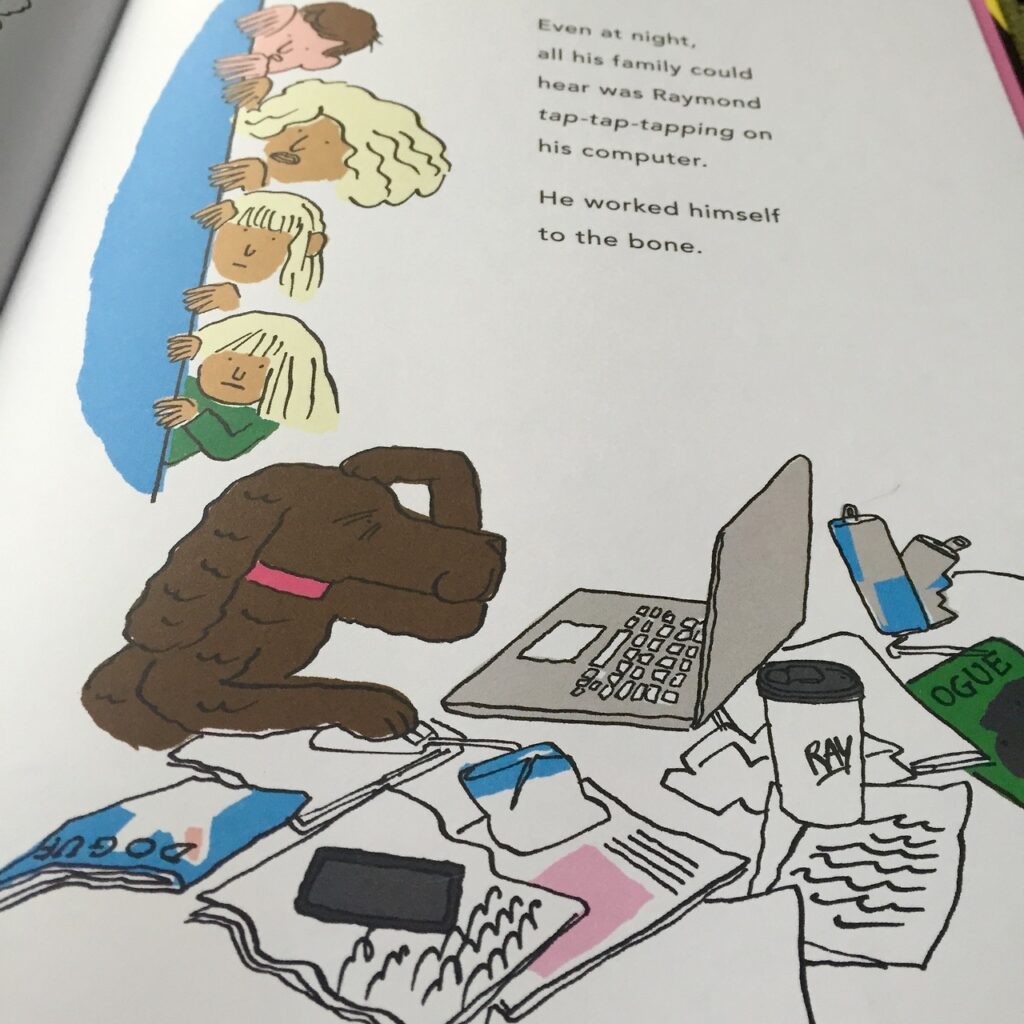
Raymond
by Yann Le Bec, Gwendal Le Bec
Candlewick
2017, 32 pages, 8.4 x 0.4 x 12.1 inches, Hardcover
Raymond is just an ordinary dog, living an ordinary dog’s life. But when he decides that he should eat with the rest of the family at the dinner table one evening, things start to change. Soon, all the dogs in town are getting a taste for life on two feet. In the hustle and bustle of his high powered job, Raymond almost forgets that even the hardest working person or pup needs to be thrown a bone now and then.
French author/illustrator/brother team, Yann and Gwendal Le Bec, bring their signature wit and style to this book, making Raymond a truly funny, bright, sweet read-aloud for both kids and grown-ups. To be honest, I think I enjoy this book even more than my preschooler did. Many of the illustrations work as stand-alone cartoons with details that hit close to home for anyone working hard, especially in print media—the ever-present reporter’s notebook, cell phone, and cup of coffee, the late nights hunched over a laptop surrounded by notes and back issues.
For whoever gets their paws on it, Raymond is a great excuse to take a break, read a good book, and remember to get your belly rubbed.
SECRET CODES & NUMBER GAMES: CRYPTOGRAPHIC PROJECTS & NUMBER GAMES FOR CHILDREN AGES 5-16
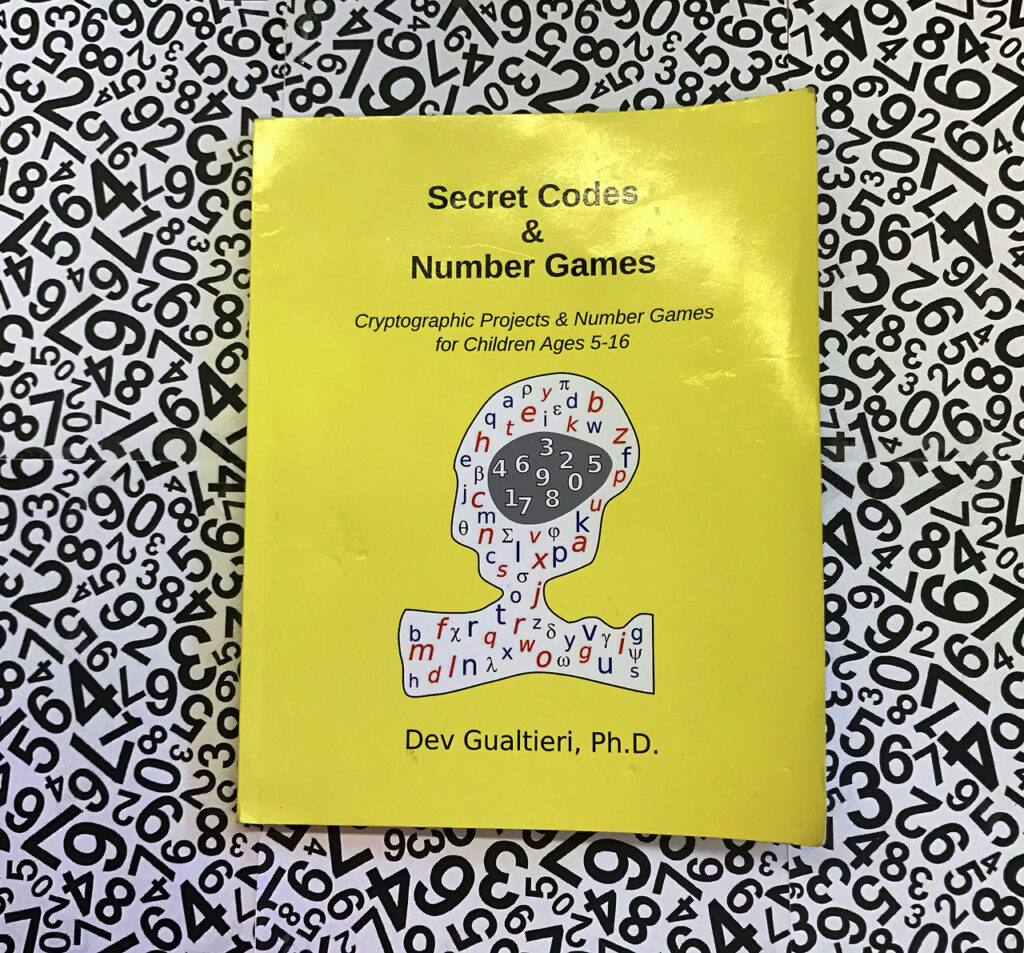
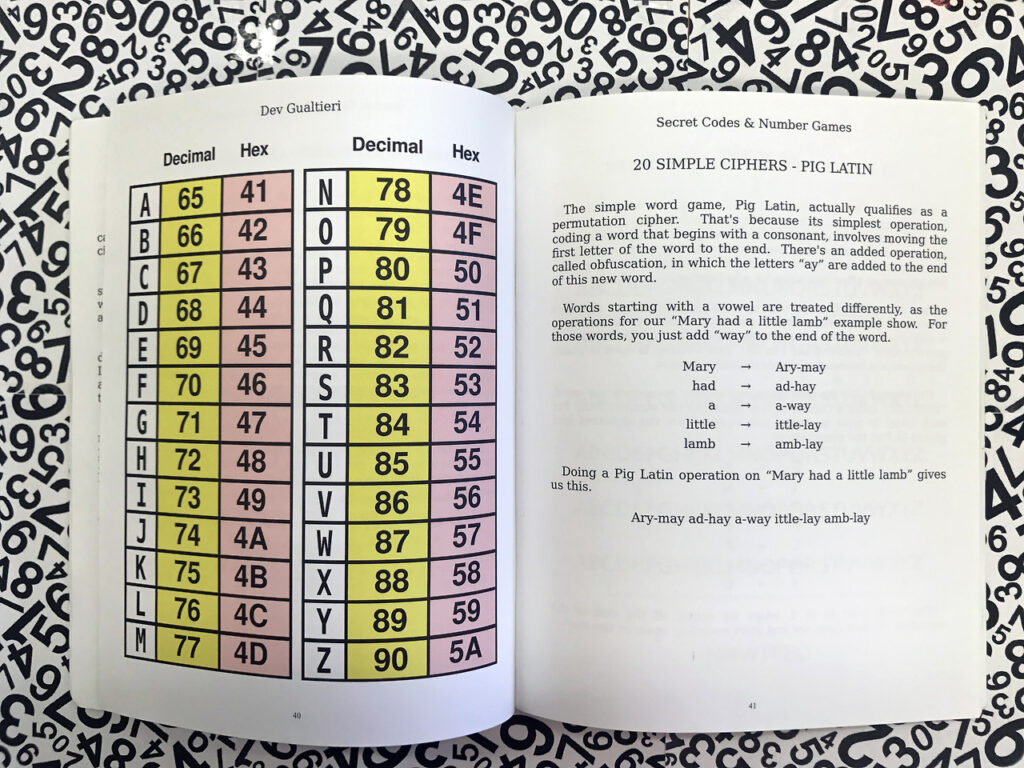
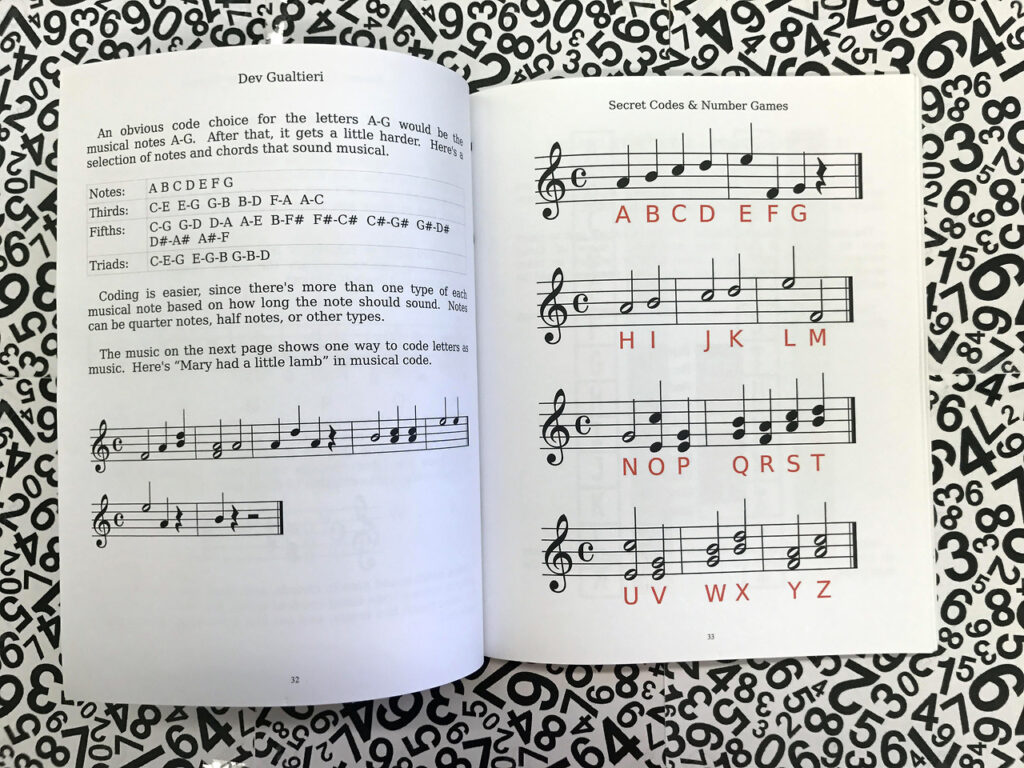
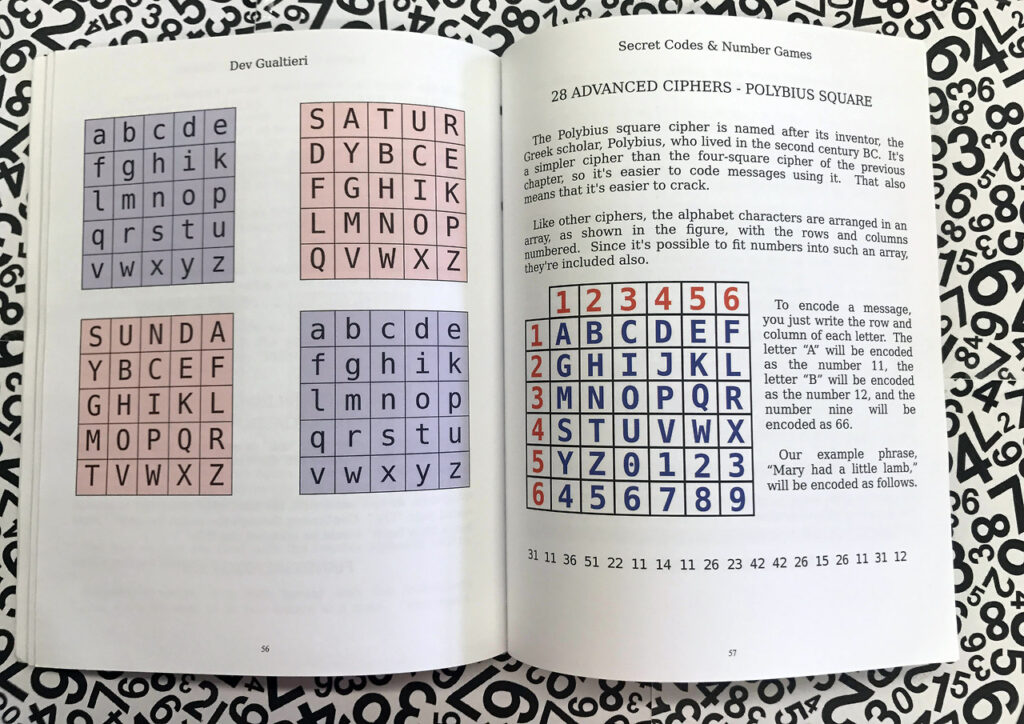
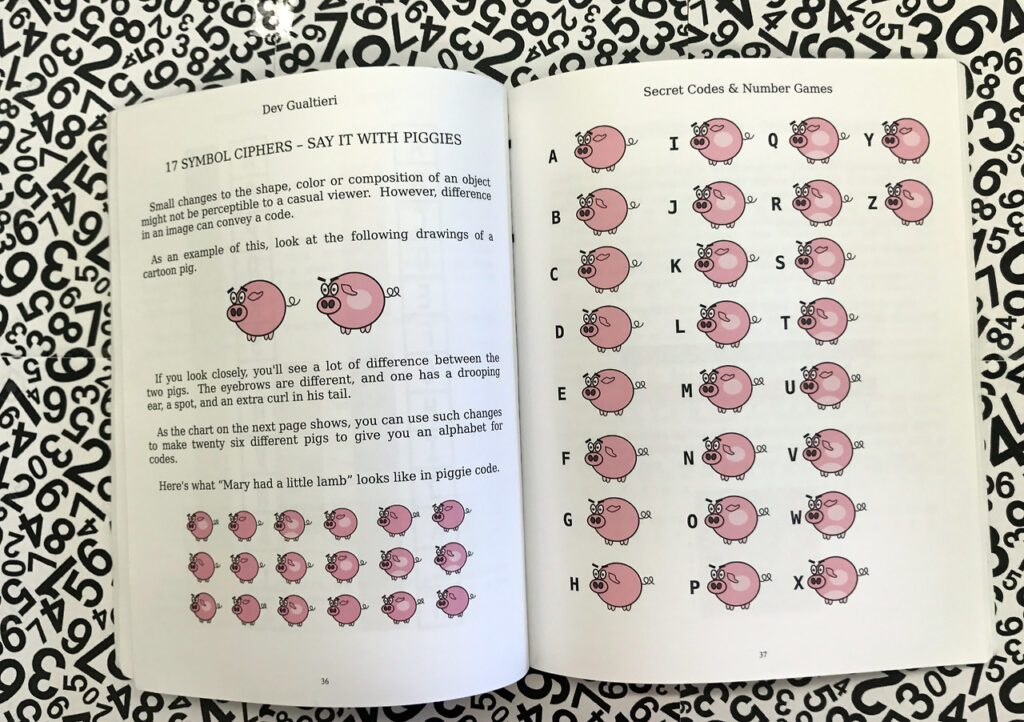
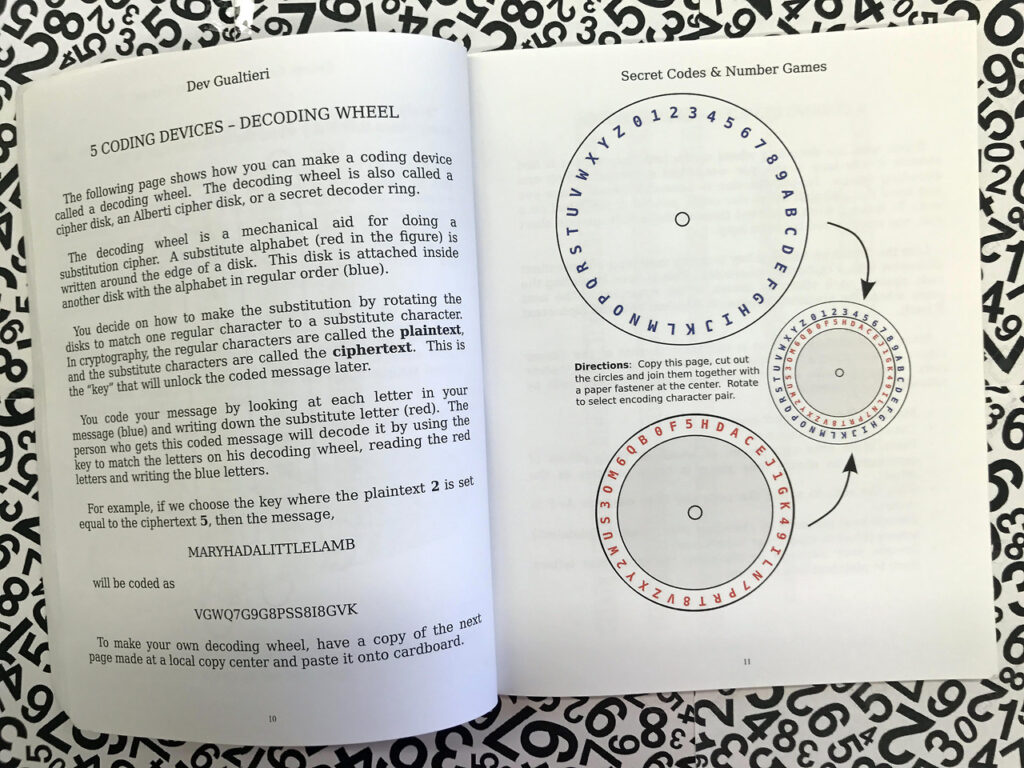
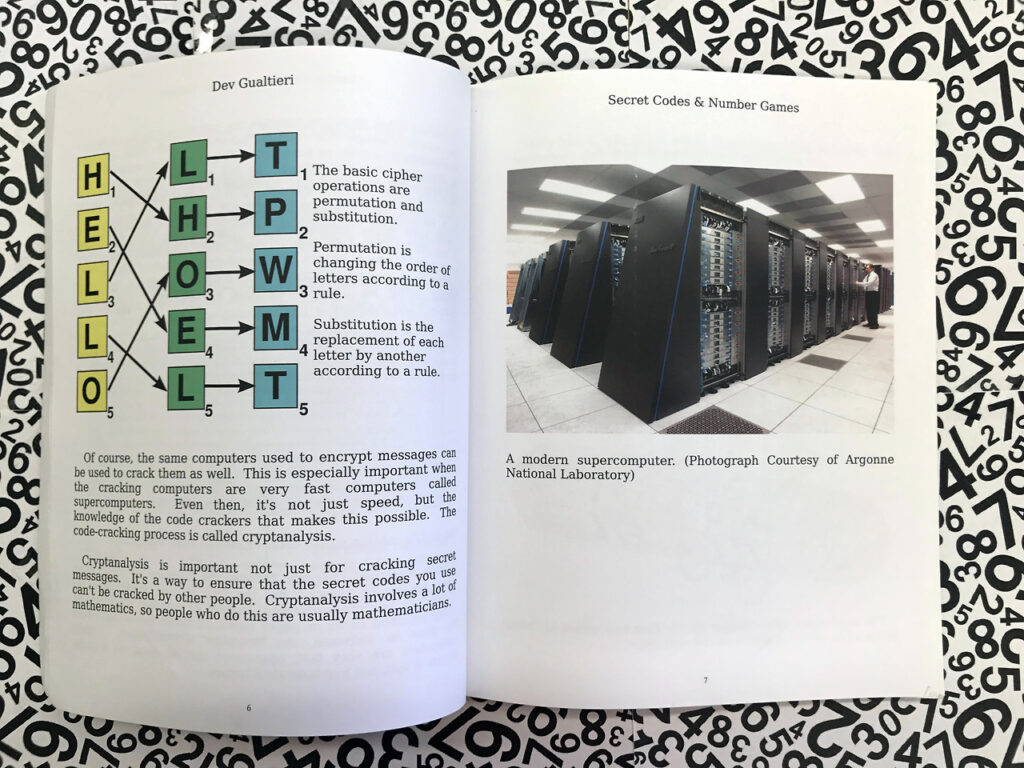
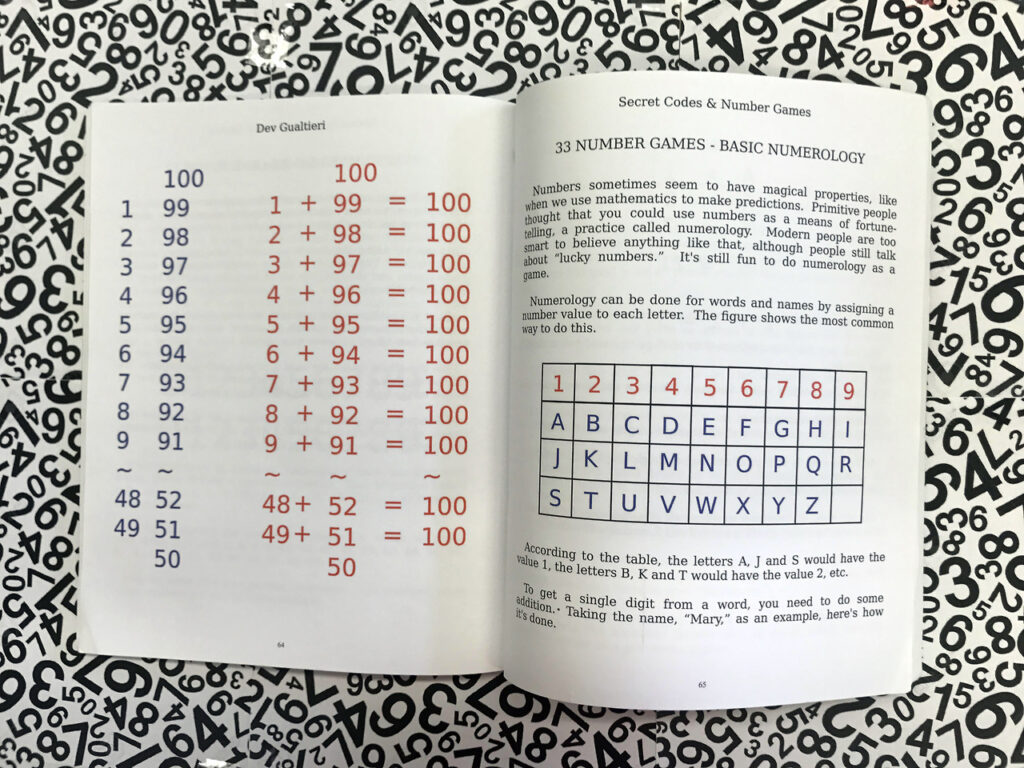
Secret Codes & Number Games
by Dr. Dev Gualtieri Ph.D.
Tikalon LLC
2014, 90 pages, 8 x 0.2 x 10 inches, Paperback
Numbers have secret lives. At a conference for my fellow educators, the topic of math came up. We were asked what our favorite numbers were, and gave a myriad of reasons for our answers. I liked the contours and sinuous shape of the number eight, and the implication of infinity if you overturn it on its side. Another teacher liked the number 9, written with what to him seemed a figure with a bulbous head that bespoke great intelligence. A third liked the number 4 given that it was versatile and could branch out in different directions. All of us walked away with the understanding that numbers contain multitudes of meanings, given some creativity and the willingness to look at them closely.
Physicist and college professor Dev Gualtieri celebrates another aspect of the hidden meanings of numbers with his self-published Secret Codes & Number Games. His book is an introduction to cryptography for ages five to sixteen, complete with colorful and explicit visuals to make a potentially complex topic accessible. Gualtieri demonstrates varies types of ciphers in which numbers are substituted for letters to reveal secret messages, such as Julius Caesar’s reputed “Caesar cipher” that includes each letter with a corresponding number on a wheel. Other ciphers are more visually driven, featuring music notes on a staff or a whimsical assortment of cartoon pigs. The engaging, lucid illustrations provided for each cipher make them easy to understand.
The book naturally also delves into the mathematical aspects of cryptography, a subject that Gualtieri offers a brief history of in his introduction. From there, readers can consult a colorful chart with the numeric ASCII computer code for each letter of the alphabet to enable simple pencil-and-paper encryption. Also featured are the Polybius Square, which uses a coordinate grid to encode each letter, and several chapters devoted to numerology. A final chapter encouraging creating one’s own ciphers bases on the simple computational principles introduced earlier brings the reader back full circle.
Gualtieri ultimately inspires readers to re-consider their relationship to numbers. We use them daily for mundane tasks such as counting change, making phone calls, or calculating tips on restaurant bills. Yet numbers also conceal and reveal, enabling us to keep secrets hidden and to share them discreetly. Gulateri’s book is more than educational entertainment. It stands as a reminder that numbers are just like people: nuanced, fascinating, and worth getting to know on a deeper level.
– Lee Hollman
04/9/2408 April 2024
Coffee Resources
Tools for Possibilities: issue no. 81
Once a week we’ll send out a page from Cool Tools: A Catalog of Possibilities. The tools might be outdated or obsolete, and the links to them may or may not work. We present these vintage recommendations as is because the possibilities they inspire are new. Sign up here to get Tools for Possibilities a week early in your inbox.
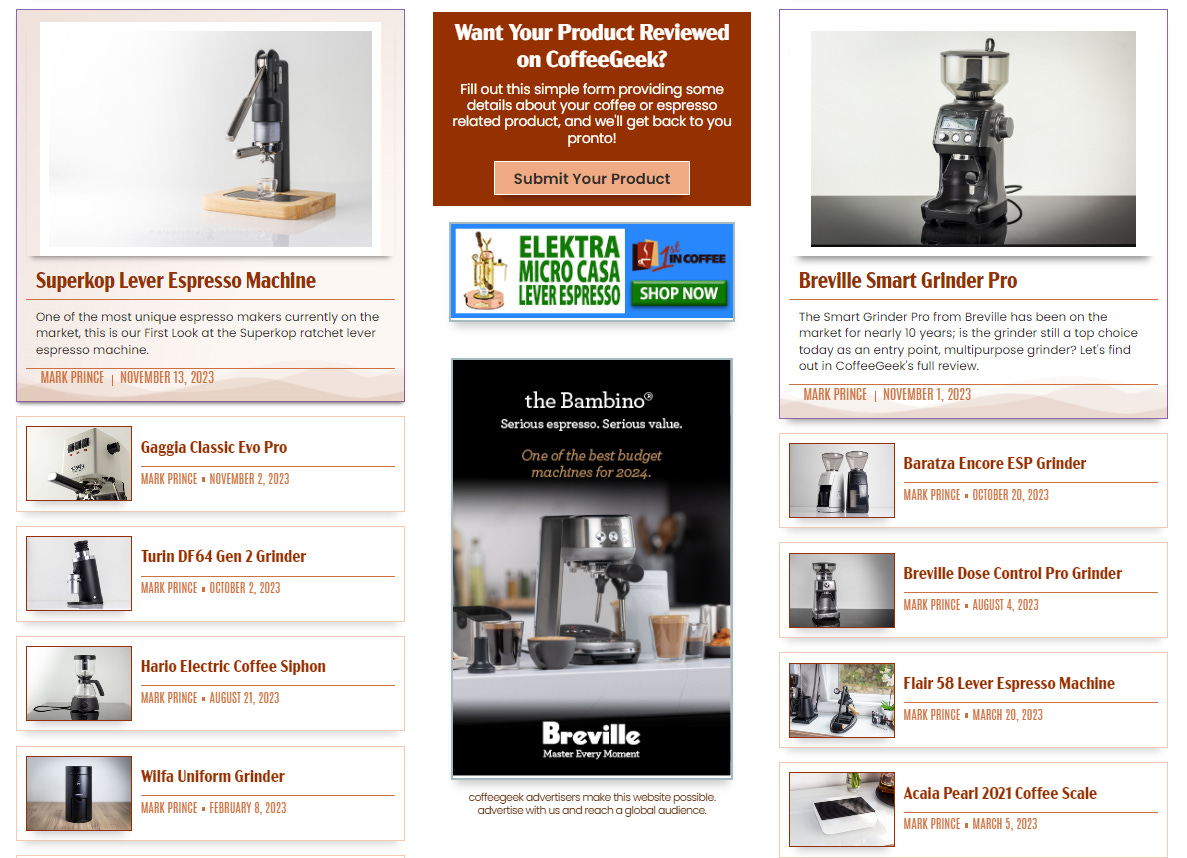
Coffee technical reviews
For an ancient drink, coffee is moving fast. Improvements for the drink come weekly. I can’t keep up with the best grinders, best roasters, best drips, best beans. So to get the latest coffee techniques and tools, by the most serious fans, I head to CoffeeGeek. Great equipment reviews, buyer guides, and tutorials for enthusiasts. They are fanatical about good coffee, but also eager to speak to beginners as well. — KK
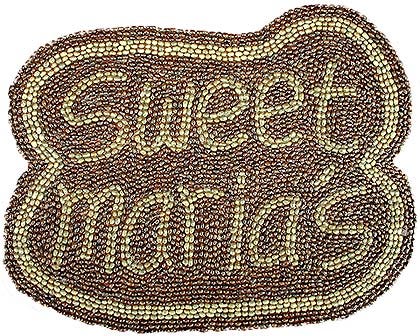
Coffee roasting supplier
My particular enthusiasm is home-roasted coffee and Sweet Maria’s is my go-to supplier. Not only do they offer everything you need to roast your own coffee at home, but they also carry a great range of products from inexpensive entry-level roasters to top-of-the-line home roasters. (I’ve been using the Hottop roaster for many years now and am very satisfied).
The best thing about Sweet Maria’s is that it is also a great source of information about coffee, roasting, brewing, and drinking. I’ve been a coffee nut for quite a few years now and have learned a fair bit about the subject. As far as I can tell, everything on the Sweet Maria’s site is either correct or clearly marked as opinion. What more could you want? — Dudley Irish
For Canadians, a good analogue to Sweet Maria’s is Green Beanery in Toronto. They sell roasting, grinding, and coffee-making equipment, as well as beans from small-scale farmers in Africa, Asia, and South America. Everything’s available online. I’ve bought a few things from them and visited their shop once during a trip to Toronto. They do good work. — Brad
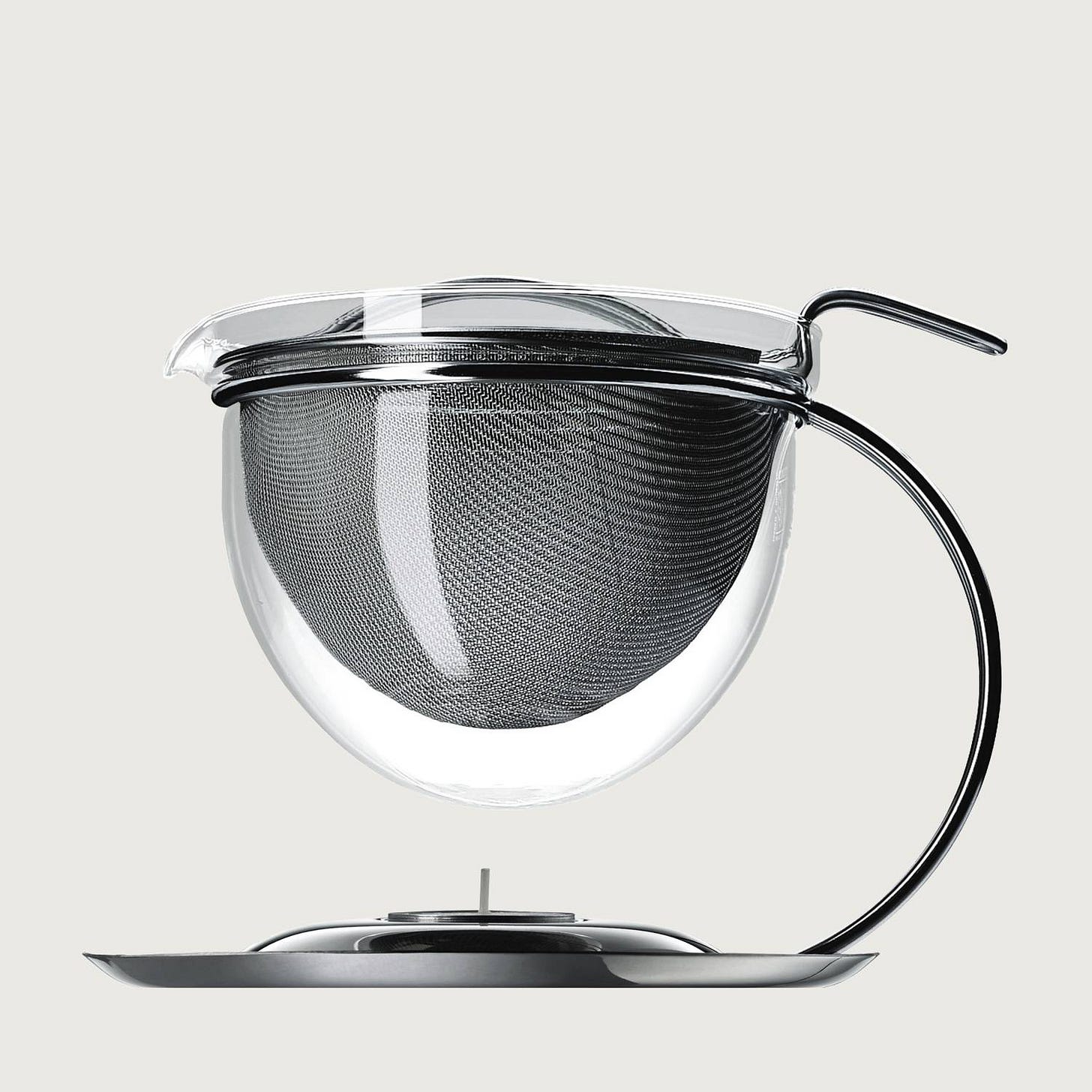
Luxurious, simple everyday brewer
I’ve used numerous tea pots, ranging from traditional to modern, built with materials from clay to plastic. The stainless steel and glass Mono Filio is the best one for regular tea drinking. I’ve been using this teapot daily for about a year and a half, drinking mainly green, oolong and white tea. I’m not sure the suspended design has any benefit besides looks, but it will prevent condensation and heat from reaching wood counters or tables. The real design innovation is the very large strainer basket. Aside from having a metal handle that makes removal easy, the basket is almost the full size of the pot itself, allowing a lot of space for the leaves to float freely. When tea leaves can float freely they release flavors more evenly, making for better-tasting tea. The tea bag is a modern convenience. What you typically get inside is crushed dust rather than intact leaves (this is why it often tastes bitter, especially in the case of black tea). When you put a tablespoon of oolong leaves in this pot, after two infusions the leaves expand to fill perhaps a cup in size. Like the smaller plastic InegnuiTEA, the transparency of the glass provides something interesting to watch while the tea brews. While the IngenuiTEA looks to be more of a travel device or something you use at work, the Mono is something you want to use in your house on a daily basis. The 20 oz. size creates the perfect amount of tea for two people and cleans up nicely. $100-plus is incredibly expensive. The matching cups I bought are $70 — ridiculous. With this one, you have to already know you really like tea. But unlike a lot of modern revisions of traditional objects where radical originality in looks creates some level of annoyance in use, Mono Tabletop’s teapot is exactly the opposite. It’s much different from the traditional clay pot, yet, for me, easier to use and a better experience. After some 4,000 years of tea culture, that achievement is worth $110. — Wayne Bremser
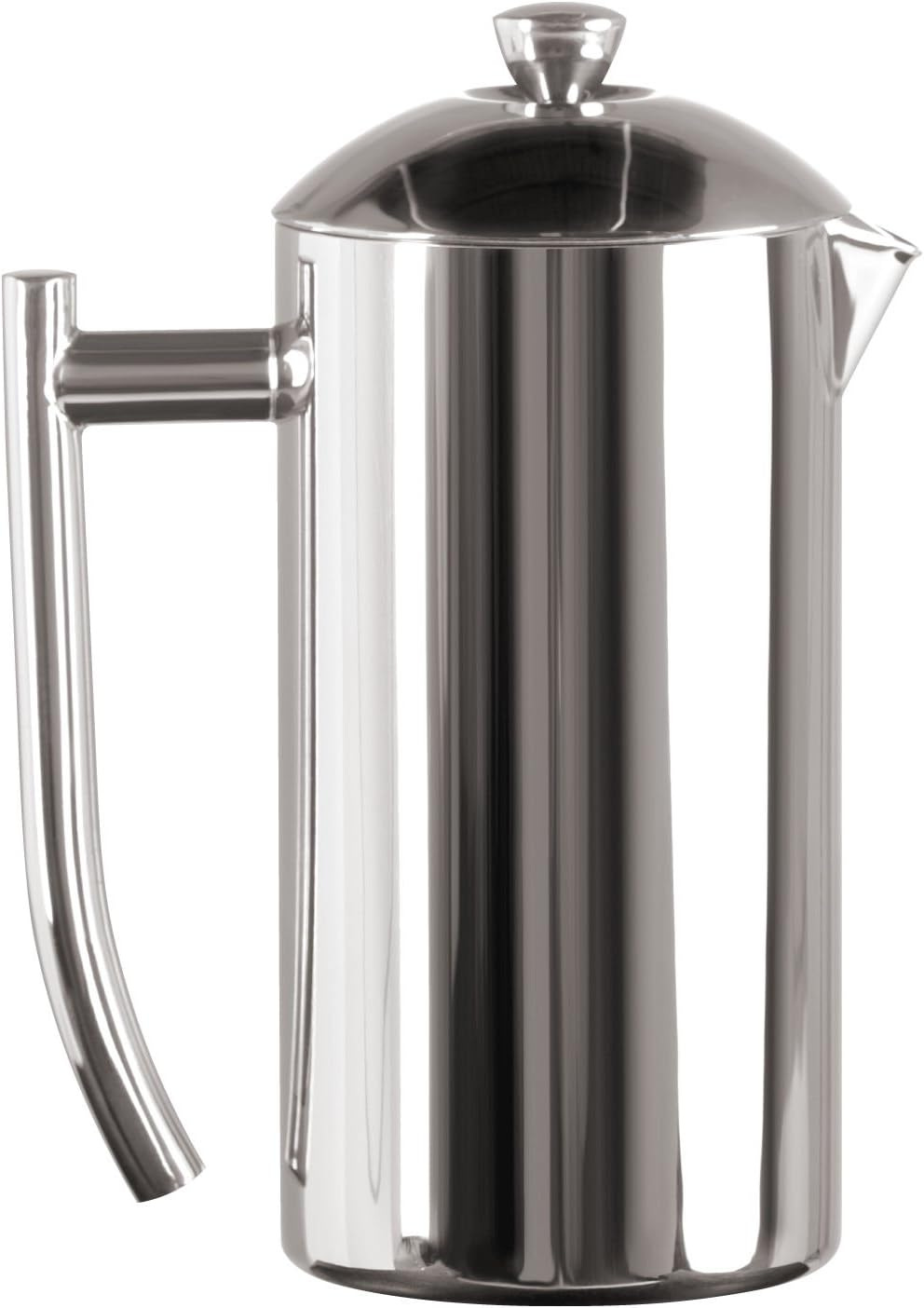
Durable, insulated coffeemaker
After breaking two glass carafes while living in the middle of nowhere, I knew there had to be a better answer to the standard French press. The Frieling is; made of all stainless steel parts, it’s insulated and has no plastic anywhere. It is awesome.
Some people think that allowing the grounds to sit in the bottom of the Freieling for an extended period of time (because the water stays hot) will make the coffee bitter. My experience is that it doesn’t. Even if you choose not to let coffee sit in the press for the two hours that it’ll remain hot, the insulation still makes a difference in the initial four-minute brewing period. Though the temperature of the water in a typical glass French press will decrease immediately, the water in the Frieling retains its heat while my coffee is brewing.
The only downside of this outstanding pot is that I don’t get to watch the brewing process. I’ve found it well worth the trade-off. It’s beautifully designed and not easily broken – dishwasher safe, too. I’ve had my Freiling French press for almost two years now, and the mirror finish still looks great except for a dent or two. It doesn’t scratch easily, and it still looks and performs just like it did out of the box. It’s the best investment for my kitchen I’ve made in years. — Brechelle Ware
04/8/24ALL REVIEWS
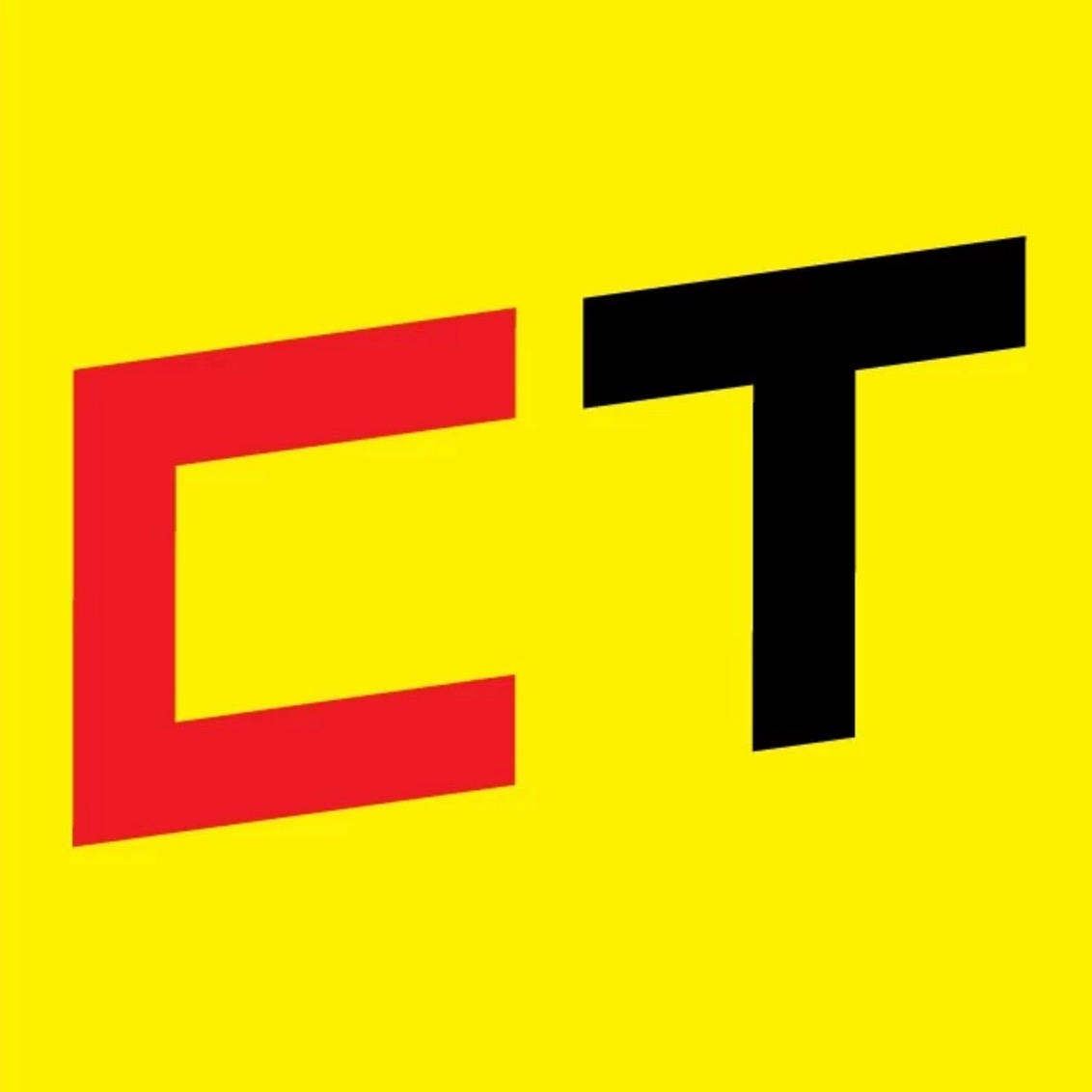 04/5/24
04/5/24
Gar’s Tips & Tools – Issue #176
Weekly-ish access to tools, techniques, and shop tales from the worlds of DIY
 04/2/24
04/2/24
Footnotes from the World’s Greatest Bookstores / Bedtime for Batman
Books That Belong On Paper Issue No. 8
EDITOR'S FAVORITES
COOL TOOLS SHOW PODCAST
WHAT'S IN MY BAG?
10 April 2024

ABOUT COOL TOOLS
Cool Tools is a web site which recommends the best/cheapest tools available. Tools are defined broadly as anything that can be useful. This includes hand tools, machines, books, software, gadgets, websites, maps, and even ideas. All reviews are positive raves written by real users. We don’t bother with negative reviews because our intent is to only offer the best.
One new tool is posted each weekday. Cool Tools does NOT sell anything. The site provides prices and convenient sources for readers to purchase items.
When Amazon.com is listed as a source (which it often is because of its prices and convenience) Cool Tools receives a fractional fee from Amazon if items are purchased at Amazon on that visit. Cool Tools also earns revenue from Google ads, although we have no foreknowledge nor much control of which ads will appear.
We recently posted a short history of Cool Tools which included current stats as of April 2008. This explains both the genesis of this site, and the tools we use to operate it.

